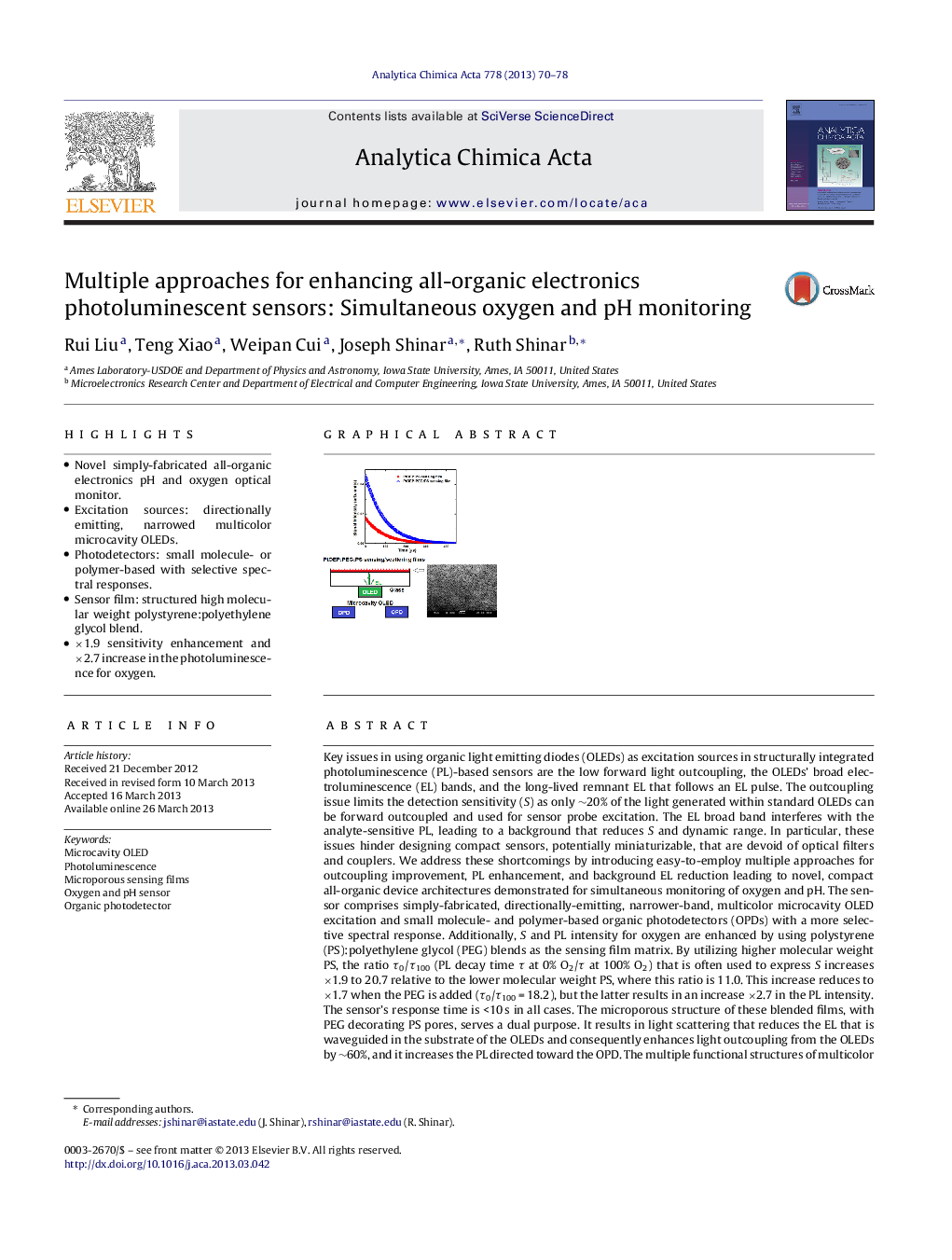| Article ID | Journal | Published Year | Pages | File Type |
|---|---|---|---|---|
| 1165792 | Analytica Chimica Acta | 2013 | 9 Pages |
•Novel simply-fabricated all-organic electronics pH and oxygen optical monitor.•Excitation sources: directionally emitting, narrowed multicolor microcavity OLEDs.•Photodetectors: small molecule- or polymer-based with selective spectral responses.•Sensor film: structured high molecular weight polystyrene:polyethylene glycol blend.•×1.9 sensitivity enhancement and ×2.7 increase in the photoluminescence for oxygen.
Key issues in using organic light emitting diodes (OLEDs) as excitation sources in structurally integrated photoluminescence (PL)-based sensors are the low forward light outcoupling, the OLEDs’ broad electroluminescence (EL) bands, and the long-lived remnant EL that follows an EL pulse. The outcoupling issue limits the detection sensitivity (S) as only ~20% of the light generated within standard OLEDs can be forward outcoupled and used for sensor probe excitation. The EL broad band interferes with the analyte-sensitive PL, leading to a background that reduces S and dynamic range. In particular, these issues hinder designing compact sensors, potentially miniaturizable, that are devoid of optical filters and couplers. We address these shortcomings by introducing easy-to-employ multiple approaches for outcoupling improvement, PL enhancement, and background EL reduction leading to novel, compact all-organic device architectures demonstrated for simultaneous monitoring of oxygen and pH. The sensor comprises simply-fabricated, directionally-emitting, narrower-band, multicolor microcavity OLED excitation and small molecule- and polymer-based organic photodetectors (OPDs) with a more selective spectral response. Additionally, S and PL intensity for oxygen are enhanced by using polystyrene (PS):polyethylene glycol (PEG) blends as the sensing film matrix. By utilizing higher molecular weight PS, the ratio τ0/τ100 (PL decay time τ at 0% O2/τ at 100% O2) that is often used to express S increases ×1.9 to 20.7 relative to the lower molecular weight PS, where this ratio is 11.0. This increase reduces to ×1.7 when the PEG is added (τ0/τ100 = 18.2), but the latter results in an increase ×2.7 in the PL intensity. The sensor's response time is <10 s in all cases. The microporous structure of these blended films, with PEG decorating PS pores, serves a dual purpose. It results in light scattering that reduces the EL that is waveguided in the substrate of the OLEDs and consequently enhances light outcoupling from the OLEDs by ~60%, and it increases the PL directed toward the OPD. The multiple functional structures of multicolor microcavity OLED pixels/microporous scattering films/OPDs enable generation of enhanced individually addressable sensor arrays, devoid of interfering issues, for O2 and pH as well as for other analytes and biochemical parameters.
Graphical abstractFigure optionsDownload full-size imageDownload as PowerPoint slide
